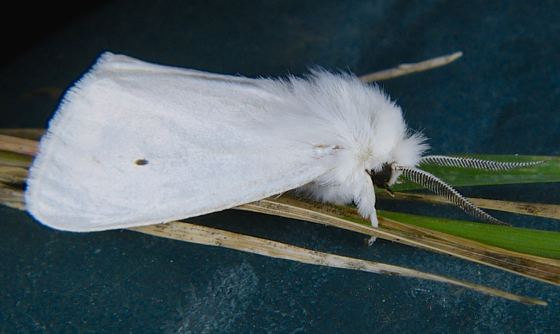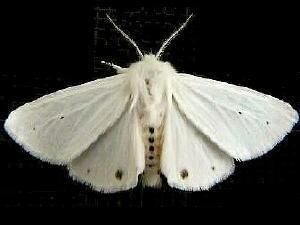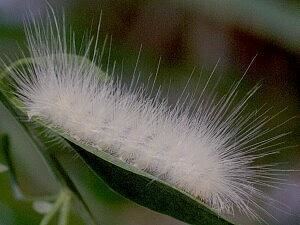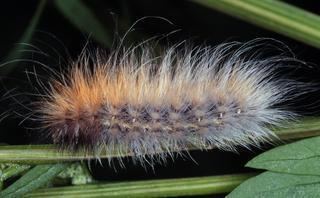Rank Species | Genus Spilosoma Higher classification Spilosoma | |
 | ||
Similar Spilosoma, Insect, Butterflies and moths, Arctiinae, Banded woolly bear | ||
Virginian tiger moth arctiidae spilosoma virginica mating
Spilosoma virginica is a species of moth in the Arctiinae subfamily. As a caterpillar, it is known as the yellow woolly bear or yellow bear caterpillar. As an adult, it is known as the Virginia tiger moth.
Contents
- Virginian tiger moth arctiidae spilosoma virginica mating
- Identification
- Diet
- Adult moth life stage
- Reproduction
- References

Identification

The caterpillar varies in color, but is typically consistent in its coloration in a single specimen, without odd tufts of different-colored hair or separately colored heads.
Diet

It has a diet of a wide range of low-growing plants, including ground cover like grass and clover. The larvae are defoliators, skeletonizing the leaves they feed on, but only the late summer batch of caterpillars is plentiful enough to do much damage to crops. This species tends to have two to three life cycles per year, with one hibernating for the winter in temperate climates.
Adult moth life stage

The adult moth tends to tent its wings over its back, rather than sitting with them spread. It is white with a darker-colored abdomen, but without the obvious, darker eyes of its close cousin the agreeable tiger moth. It is not poisonous, but some people may have an allergic reaction to the bristles on its body.
Reproduction

The female is slightly larger than the male in larva form, and as an adult finds a mate by extruding an organ that emits a pheromone which the male can smell. The male, which unlike the female has the large, feathered antennae characteristic of pheromone-using moths, flies zigzag search patterns, eventually homing in on a female. After mating, he goes off to find other females, while the female stops to lay between 20 and 100 eggs in a single layer on the underside of a leaf. The larvae stay together when very young, but become solitary as they gain size.
